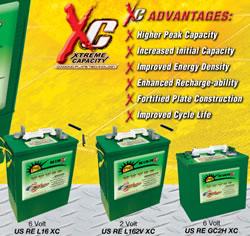Lithium-ion batteries continue to be the technology of choice for small electronics but, as illustrated here, their continued evolution and the introduction of new large format applications require a closer look at the technology inside the battery.
Building a Safer Lithium-Ion Battery
M.Y. Saidi | Valence Technology, Inc.
| Lithium-ion batteries continue to be the technology of choice for small electronics but, as illustrated here, their continued evolution and the introduction of new large format applications require a closer look at the technology inside the battery. |
| Power and Mobility: Building a Safer Lithium-Ion Battery |
| M.Y. Saidi, Valence Technology, Inc. |
|
When portable device designers develop the latest gadgets with the most advanced features, much thought goes into the battery technology that powers these small, yet complex products. For over a decade, lithium-ion cobalt-oxide has been the technology of choice for mobile device manufacturers because it offers high energy density, which translates into more run-time for the end users. During the past two years there have been several recalls of lithium-ion cobalt oxide battery packs, including cells from a major Japanese manufacturer. It is becoming increasingly clear that engineering controls and safety devices have not been sufficient to prevent safety recalls. Today's newest phosphate based lithium-ion chemistry may have the ability to make lithium-ion batteries safer than ever before.
Battery Options: What You Should Know
Identifying New Chemistries
With Saphion phosphate cathode material, the
strong covalent bonding between the oxygen and the phosphorus forms a
strong polyanion unit in the phosphate ion that allows for greater
stabilization of the structure compared to layered oxides, e.g.
lithium-ion cobalt oxide, wherein the oxygen is more weakly bound. The
large phosphate polyanion also enlarges the free volume of the host's
interstitial space available for lithium. The phosphorus-oxygen-metal
bonding helps to stabilize the redox energies of the metal cation and
the structure, allowing a relatively fast ion migration. Consequently,
oxygen atoms are a lot harder to extract from Saphion phosphate cathode
materials. Under abuse conditions, there is a much less likelihood of
oxygen liberation from the structure due to phosphate decomposition.
Only under extended and extensive heating (typically > 800ºC) can
decomposition to a Nasicon related phase, in part, (without oxygen
release) occur. This is important to note because it further illustrates
the ability of Saphion phosphate cathode materials to remain stable even
in the harshest conditions, thus avoiding any uncontrollable thermal
excursions.
Power Safety for the Future
|
|
The content & opinions in this article are the author’s and do not necessarily represent the views of AltEnergyMag
Comments (0)
This post does not have any comments. Be the first to leave a comment below.
Featured Product



 Upon removal of lithium, lithiated cobalt
oxide undergoes a nonlinear expansion of the unit cell. This is
particularly important for battery safety in that it affects the
structural integrity of the material, and hence its safety. Removing all
of the lithium available in a Saphion phosphate cathode material causes
no structural modification. In fact, the structures of the fully
lithiated and de-lithiated phases are very similar. This confirms that
the thermal stability of the Saphion phosphate cathode material even
fully depleted of lithium is still far better than the partially de-lithiated
lithium-ion cobalt oxide.
Upon removal of lithium, lithiated cobalt
oxide undergoes a nonlinear expansion of the unit cell. This is
particularly important for battery safety in that it affects the
structural integrity of the material, and hence its safety. Removing all
of the lithium available in a Saphion phosphate cathode material causes
no structural modification. In fact, the structures of the fully
lithiated and de-lithiated phases are very similar. This confirms that
the thermal stability of the Saphion phosphate cathode material even
fully depleted of lithium is still far better than the partially de-lithiated
lithium-ion cobalt oxide. 
